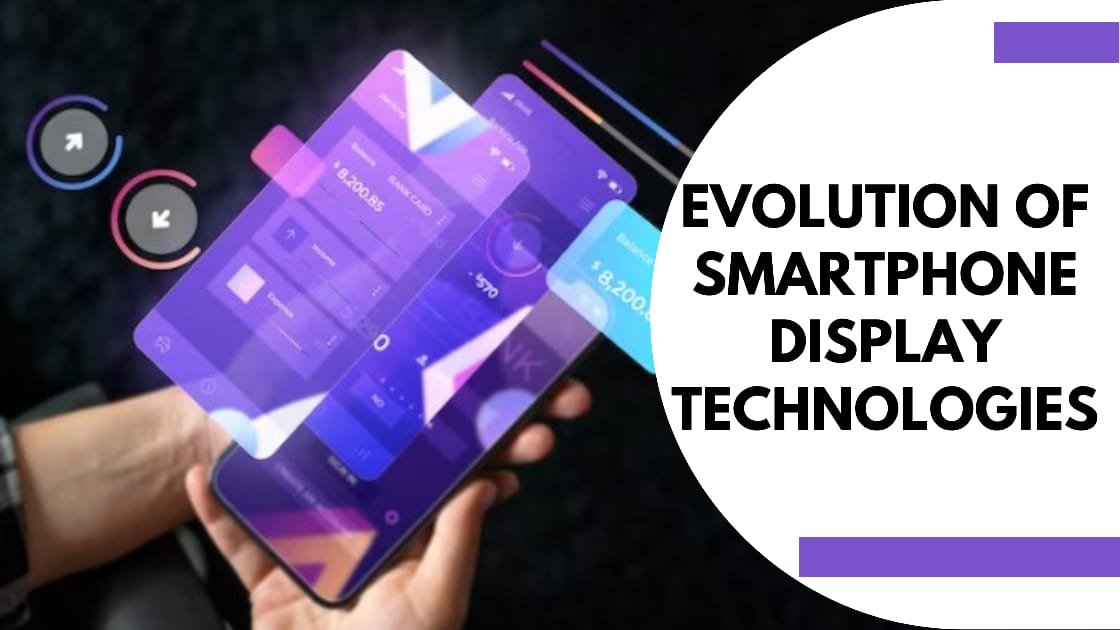In the world of smartphones people always love the better screens they get on their phones. We’re moving from the old CRT screens to today’s vibrant, high-resolution displays that grab our attention. It’s a journey worth exploring – from the early days to now, where every step has been remarkable.
Let’s look at the fascinating evolution of smartphone display technologies, uncovering the milestones that shape our visual experience.
LCD Screens

During the early stages of smartphones LCD (Liquid Crystal Display) screens were the trendsetters, laying the foundation for vivid color reproduction and enhanced visibility. However with ongoing technological advancements, the quest for superior and more efficient displays has led to the rise of LED-backlit LCD screens.
This innovation isn’t just about elevating brightness it’s also enhancing contrast ratios, actively crafting a visual experience that captivates users. Today, as we interact with our Samsung, iPhone or other smartphones, the seamless collaboration between technology and display ensures a vibrant and engaging encounter, where every detail comes to life in a way that was once merely a vision.
AMOLED

A groundbreaking transformation occurred in smartphone display technology with the introduction of AMOLED (Active Matrix Organic Light-Emitting Diode) screens. AMOLED brought about groundbreaking improvements, introducing deeper blacks, elevated contrast ratios, and the unique ability to control each pixel individually. This technology isn’t just about enhancing visual appeal; it’s a game-changer that actively contributes to improved energy efficiency.
Today, the amazing AMOLED displays create a visual experience when we look at our smartphones. Every detail is vibrant, and the power efficiency seamlessly becomes part of how we use our phones. The incorporation of AMOLED screens has established a new benchmark, reshaping how we perceive and interact with our device displays.
OLED

Expanding on the success of AMOLED, OLED (Organic Light-Emitting Diode) displays have emerged as the forefront in smartphone technology. OLED inherits the advantages of AMOLED but adds a distinctive benefit – adaptability. This flexibility has unlocked new possibilities, giving rise to curved and foldable displays.
The arrival of OLED signifies a crucial moment, bringing in a new era of innovation and design in the aesthetics of smartphones. As we witness the evolution of displays, the malleability of OLED technology enhances visual experiences and reshapes the physical form of smartphones, offering users a glimpse into the limitless potential of future device designs.
HDR and True Tone
High Dynamic Range (HDR) technology has become a standard feature in modern smartphone displays. HDR enhances the contrast and color accuracy, delivering a more lifelike viewing experience. True Tone technology, inspired by advancements in ambient light sensing, adjusts the display’s color temperature based on the surrounding environment, reducing eye strain and further improving user comfort.
Notch, Punch-Hole and Under-Display Cameras
In the past few years, there has been a continuous effort to achieve bezel-less displays. This has led smartphone manufacturers to develop creative solutions for accommodating front-facing cameras. From the introduction of notches to the adoption of punch-hole cutouts and the incorporation of under-display cameras, these advancements signal a paradigm shift in design norms.
Smartphone manufacturers are not only pushing the boundaries of aesthetics but are also maximizing screen real estate to provide users with expansive and immersive displays. The quest for bezel-less designs is reshaping how we engage with our devices, offering a seamless visual experience that goes beyond conventional design constraints. As we embrace these changes, the evolution of smartphone displays continues to redefine our expectations.
The Future: Foldable Displays and Beyond
As we peer into the future foldable displays stand out as the next frontier in smartphone evolution. These flexible screens open up new possibilities for multitasking and immersive experiences. Beyond foldables, advancements in micro-LED technology promise even brighter displays with improved energy efficiency, setting the stage for the next wave of innovation.
Conclusion:
The progress in smartphone display technologies reflects our ongoing quest for a more immersive and visually captivating user experience. From the early days of LCD to the present era of foldable displays, each innovation leaves a lasting mark on how we interact with our devices. Technology pushes boundaries, and we eagerly anticipate the next chapter in the ever-unfolding visual journey of smartphones. As we speak, advancements in display technology are actively shaping the way we experience and engage with our devices, promising exciting developments on the horizon.
For expert smartphone repairs and services trust Screen Fixed visit this. Your trusted partner in keeping your device’s display at its best.

